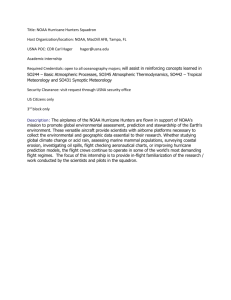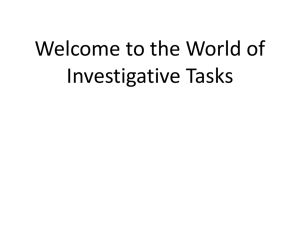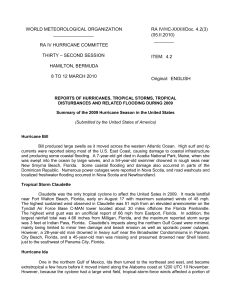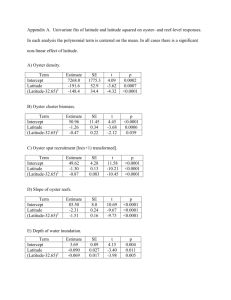research_plan_abs_SciFair_2013
advertisement
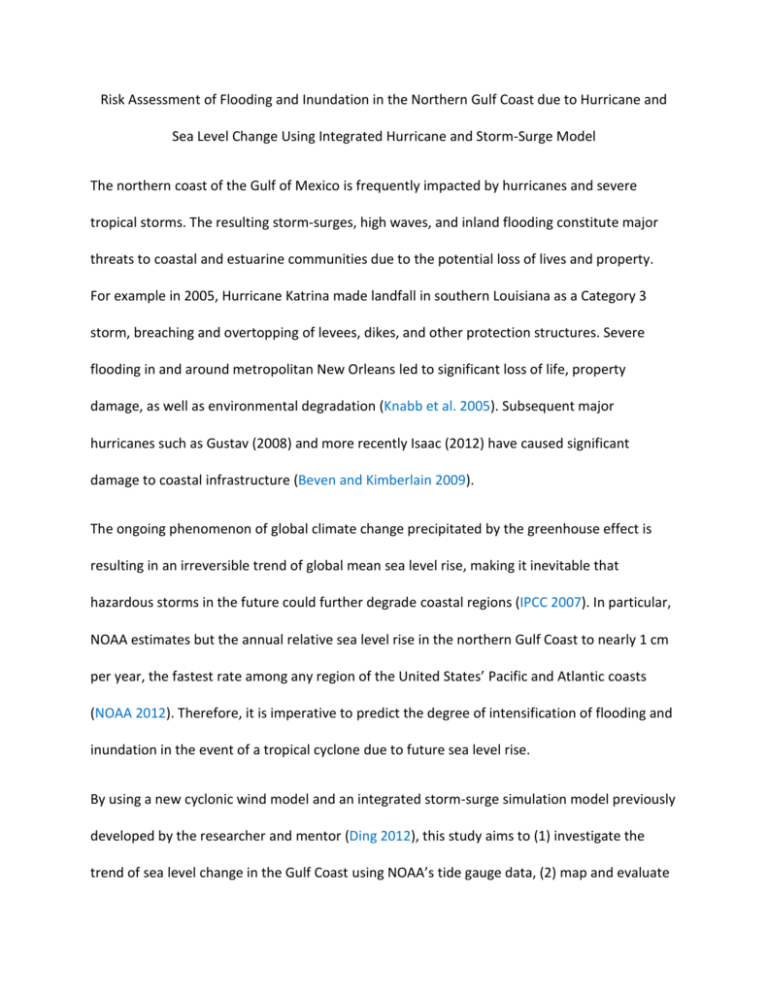
Risk Assessment of Flooding and Inundation in the Northern Gulf Coast due to Hurricane and Sea Level Change Using Integrated Hurricane and Storm-Surge Model The northern coast of the Gulf of Mexico is frequently impacted by hurricanes and severe tropical storms. The resulting storm-surges, high waves, and inland flooding constitute major threats to coastal and estuarine communities due to the potential loss of lives and property. For example in 2005, Hurricane Katrina made landfall in southern Louisiana as a Category 3 storm, breaching and overtopping of levees, dikes, and other protection structures. Severe flooding in and around metropolitan New Orleans led to significant loss of life, property damage, as well as environmental degradation (Knabb et al. 2005). Subsequent major hurricanes such as Gustav (2008) and more recently Isaac (2012) have caused significant damage to coastal infrastructure (Beven and Kimberlain 2009). The ongoing phenomenon of global climate change precipitated by the greenhouse effect is resulting in an irreversible trend of global mean sea level rise, making it inevitable that hazardous storms in the future could further degrade coastal regions (IPCC 2007). In particular, NOAA estimates but the annual relative sea level rise in the northern Gulf Coast to nearly 1 cm per year, the fastest rate among any region of the United States’ Pacific and Atlantic coasts (NOAA 2012). Therefore, it is imperative to predict the degree of intensification of flooding and inundation in the event of a tropical cyclone due to future sea level rise. By using a new cyclonic wind model and an integrated storm-surge simulation model previously developed by the researcher and mentor (Ding 2012), this study aims to (1) investigate the trend of sea level change in the Gulf Coast using NOAA’s tide gauge data, (2) map and evaluate the potential risk of coastal flooding and inundation in the MS/LA Gulf Coast due to tropical cyclones, (3) assess the impact of local sea level change on hurricane-induced flooding and inundation, and (4) propose and discuss possible strategies for mitigating future hazards induced by hurricanes in the MS/LA Gulf Coast. Key words: Sea Level Change, Hurricane, Coastal Flooding and Inundation, Numerical Simulation, Storm Surge. References: Beven, J. L., Kimberlain, T. B. (2009). Tropical Cyclone Report. Hurricane Gustav. Report TCRAL072008, National Hurricane Center, 36pp, available at http://www.nhc.noaa.gov/pdf/TCRAL072008_Gustav.pdf, Assessed on Nov. 27, 2012. IPCC (2007). Climate Change 2007: Synthesis Report. Intergovernmental Panel on Climate Change. http://www.ipcc.ch/pdf/assessment-report/ar4/syr/ar4_syr.pdf. Accessed 31 Mar 2008. Knabb, R.D., Rhome, J.R., Brown, D.P. (2005). Tropical Cyclone Report Hurricane Katrina 23-30 August 2005. National Hurricane Center, Miami, Florida. Ding, T. (2012). Developing a Hurricane Landfall Model for Wind and Storm-Surge Prediction in the Northern Gulf Coast. Research Paper for the 2012 Siemens Competition in Math, Science and Technology. NOAA (2012), Sea level trend, http://tidesandcurrents.noaa.gov/sltrends/sltrends.shtml, assessed 11 May 2012.


